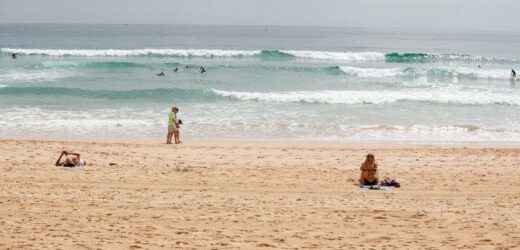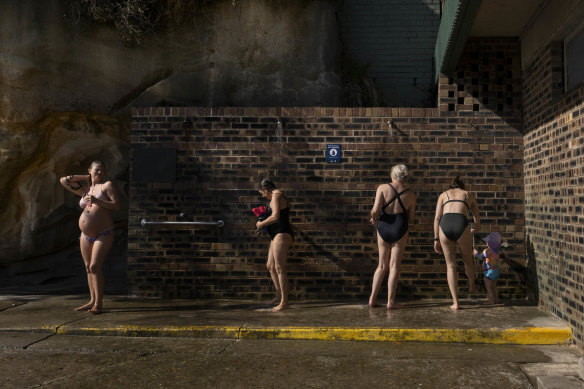Sydney is set to swelter through its hottest day in two years on Monday, with temperatures in the city to soar into the high 30s.
While the warm weather will linger across the city – and much of NSW – for most of the week, southern parts of the state are likely to see snow later this week with temperatures dropping to 4 degrees.
Temperatures on Monday are expected to hit 36 degrees for the first time in two years.Credit:Nikki Short
Sydney is likely to see temperatures reach 36 degrees, with parts of western Sydney, such as Camden, likely to reach 38 degrees. The last time the city sweltered through 35 degrees was January 26, 2021 – that’s 769 days ago.
Weatherzone meteorologist Felix Levesque said there was a lot of heat building up over the interior of the country, with a low-pressure trough crossing the state and bringing storms to central parts of NSW.
That trough will draw heat to eastern parts of the state, driving temperatures up. For example, on Monday Campbelltown will likely record 37 degrees, Bondi will experience 35 degrees and North Sydney will hit 38 degrees.
On Tuesday temperatures will remain warm, with the city likely to experience 35 degrees, Penrith to record 36 and Bondi 31 degrees. By Wednesday, temperatures are expected to return to the mid-20s for much of the city.
Swimmers will be flocking to the beaches on Monday with temperatures expected to hit 36 degrees for the first time in two years.Credit:Janie Barrett
“Monday will be the hottest day, while on Tuesday we will see the trough more constrained to north-eastern parts of the state and we will see temperatures drop across western and southern NSW on Tuesday as colder air pushes in,” he said.
Levesque said this was in sharp contrast to temperatures further south in the state: Thredbo will see snow and a top of 4 degrees on Wednesday, with Perisher likely to see 6 degrees that day too.
After months of heavy rainfall, fire agencies are worried about the increased grass growth, particularly west of the Great Dividing Ranges. On Sunday, a total fire ban was issued for seven parts of NSW, including the central and southern ranges, greater Hunter and lower central west plains.
Some parts of these regions are likely to see extreme fire danger.
Get to the heart of what’s happening with climate change and the environment. Our fortnightly Environment newsletter brings you the news, the issues and the solutions. Sign up here.
Most Viewed in Environment
From our partners
Source: Read Full Article




